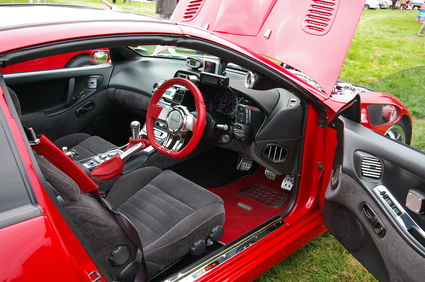
Vehicle owners expect both style and convenience from their car seats. Modern car seats therefore come in a variety of fabrics, which range from nylon to leather. Genuine leather offers both pure luxury and durability but does not adjust as easily as other materials to changes in temperature. Even if you do not eat or drink in your vehicle, spills and stains invariably occur; an easy-to-wipe material typically makes for the most practical, and therefore preferred, car seat material.
Quality leather seat covers give the vehicle’s interior an upmarket look. Manufactures of leather interior kits typically design their products to suit the car’s year, make and model. Although leather seat covers are available, select companies design their leather kits to replace the factory seat covers, normally making these interior car kits from automotive-grade leather. Select leather upholstery kits combine matching vinyl or suede. These combinations may offer the suede sections in either perforated or flat forms. Synthetic or “leather on roll” car seats are also available.
CR-grade neoprene, a water-resistant material used in wetsuits, offers a pleasing, cushiony fee — always appreciated during long road trips. Moreover, you can easily spot clean neoprene, or hand wash and air-dry it. Neoprene does not heat up as quickly as other car seat materials when exposed to the sun, and this product does not cause excessive sweating.
Suede provides a durable and elegant seating option for many vehicle owners, although it picks up dirt more quickly than other car seat materials do. Use a suede brush to remove dust and dirt, and always brush in a single direction. Thereafter, use a suede spray cleaner and round off with a final brush after the spray cleaner has dried.
Vinyl car seats come in various colors. Upholstery repair and restoration is inexpensive for vinyl car seats, and small tears in this material are easy to repair at home. In situations where aging vinyl car upholstery begins to crack, simply ease a patch of the same material and color through and under the tear, and glue it in place. Professional cleaning and conditioning to remove stains and embedded soiling in this upholstery material are also inexpensive.